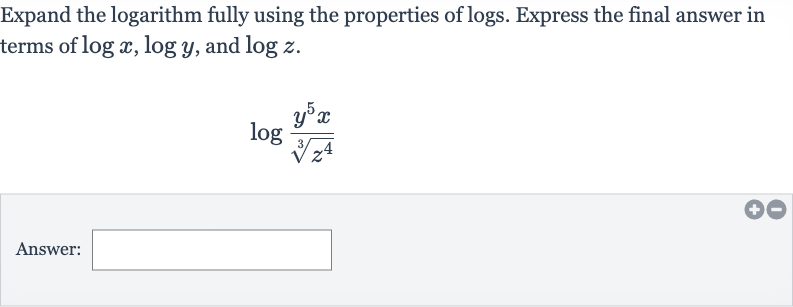Full solution
Q. Expand the logarithm fully using the properties of logs. Express the final answer in terms of , and .Answer:
- Identify Properties: Identify the properties used to expand the logarithm.We will use the quotient property of logarithms to separate the numerator and denominator, the power property to bring down exponents, and the property for the logarithm of a product to separate the terms in the numerator.
- Apply Quotient Property: Apply the quotient property to the logarithm.The quotient property states that . We apply this to our logarithm:
- Apply Product Property: Apply the product property to the logarithm of the numerator.The product property states that . We apply this to the logarithm of the numerator:
- Apply Power Property : Apply the power property to the logarithm of . The power property states that . We apply this to : \(\newline\log(y^{5}) = 5 \cdot \log(y)\)
- Apply Power Property : Apply the power property to the logarithm of the denominator.We need to express the cube root of as and then apply the power property:
- Combine Properties: Combine all the properties to write the final expanded form.We combine the results from steps to to get the final expanded form: = =
More problems from Quotient property of logarithms
QuestionGet tutor help
QuestionGet tutor help
QuestionGet tutor help
QuestionGet tutor help
QuestionGet tutor help

